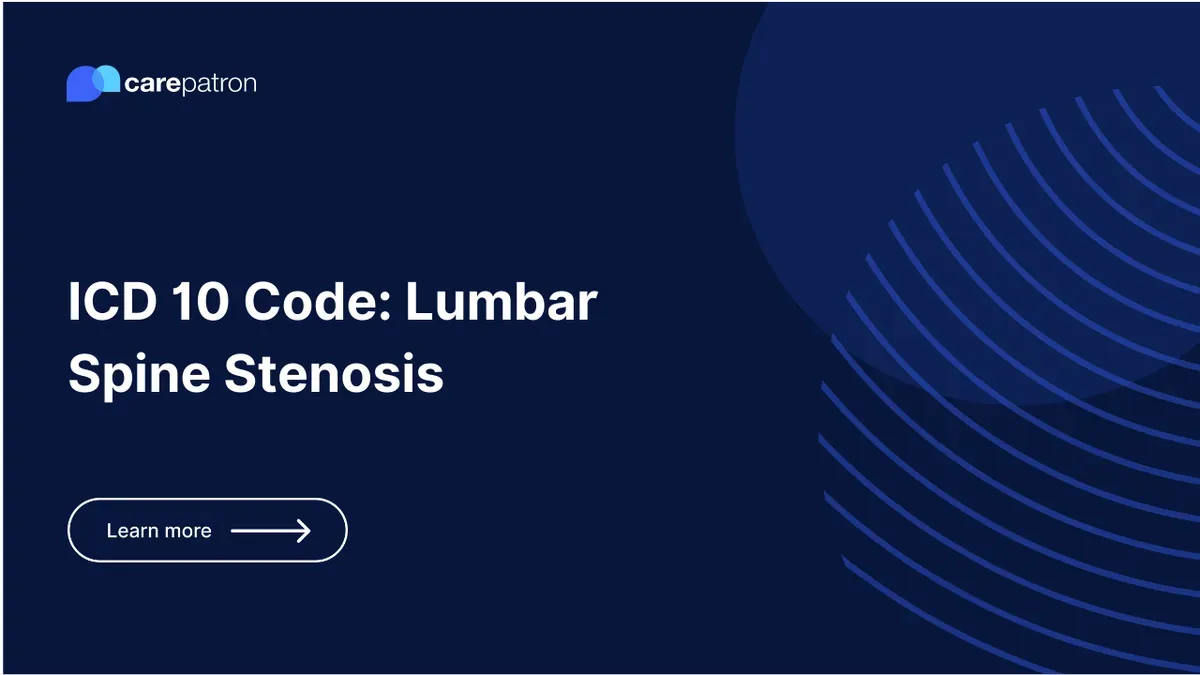
Lumbar Spine Stenosis ICD-10-CM Codes
Discover the ICD-10 codes used for lumbar spine stenosis. Learn how these codes help healthcare providers identify, track, and communicate the diagnosis.
Use Code
Commonly asked questions
A lumbar spine stenosis ICD 10 code identifies and communicates the diagnosis in medical records and billing systems. It helps healthcare providers track the prevalence of the condition and determine reimbursement levels for related medical services.
Common treatments for lumbar spine stenosis include non-surgical options like physical therapy, stretching, medications (NSAIDs, muscle relaxants), and epidural steroid injections. Surgical treatment is considered for severe cases that do not improve with non-surgical methods, with the specific procedure based on the location and severity of the stenosis.
A diagnosis code for lumbar spine stenosis signifies the identification of the condition in medical records and billing systems. It includes information about the location and severity of the stenosis, facilitating effective communication between healthcare providers and assisting in determining reimbursement levels for related medical services.
EHR and practice management software
Get started for free
*No credit card required
Free
$0/usd
Unlimited clients
Telehealth
1GB of storage
Client portal text
Automated billing and online payments
